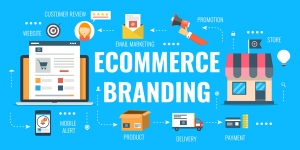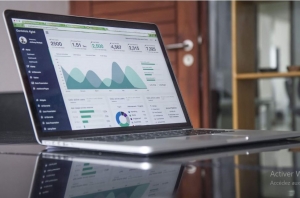Digital marketing encompasses a broad range of techniques and platforms, all aimed at increasing brand visibility, driving traffic, and ultimately, boosting revenue. From building a strong online presence to engaging with customers through social media, the opportunities are endless. In this guide, we'll delve into the various ways small businesses can leverage digital marketing to fuel their growth and achieve their goals.
ith the right approach, digital marketing can level the playing field, allowing small businesses to compete with larger corporations on a more equal footing. In this comprehensive guide, we'll explore various ways small businesses can harness the power of digital marketing to fuel their growth and expand their reach.
Understanding Your Audience
Before diving into digital marketing tactics, it's crucial to understand your target audience. Conduct thorough market research to identify your ideal customers, their preferences, pain points, and online behaviors. This insight will guide your digital marketing efforts and ensure that your messages resonate with your audience.
- Best Practice: Conduct thorough market research to identify your target audience's demographics, preferences, and pain points.
- Pro Tip: Use online survey tools and social media analytics to gain valuable insights into your audience's behavior and preferences.
Building a Strong Online Presence
Establishing a robust online presence is the cornerstone of successful digital marketing for small businesses. Start by creating a professional website that showcases your products or services effectively. Optimize your website for search engines (SEO) by incorporating relevant keywords into your content, meta tags, and URLs. Additionally, ensure that your website is mobile-friendly and loads quickly to provide a seamless user experience.
- Best Practice: Create a professional website optimized for search engines (SEO) and user experience.
- Pro Tip: Regularly update your website with fresh content and engage with visitors through blog comments and social media integration.
Content Marketing
Content is king in the digital realm, and content marketing is a powerful tool for small businesses to attract and engage their target audience. Create high-quality, informative content that addresses the needs and interests of your audience. This could include blog posts, articles, videos, infographics, and podcasts. Share your content across various channels, including your website, social media platforms, and email newsletters, to increase visibility and drive traffic.
- Best Practice: Create high-quality, relevant content that provides value to your audience.
- Pro Tip: Repurpose your content into different formats, such as videos, infographics, and podcasts, to reach a wider audience and enhance engagement.
Social Media Marketing
With billions of users worldwide, social media platforms offer small businesses a cost-effective way to connect with their audience and build brand awareness. Identify the platforms where your target audience is most active and create engaging social media content that encourages interaction and sharing. Utilize features such as hashtags, stories, and live videos to boost engagement and reach a wider audience.
- Best Practice: Choose the right social media platforms based on your target audience's demographics and interests.
- Pro Tip: Schedule posts in advance using social media management tools to maintain consistency and maximize reach.
Email Marketing
Email marketing remains one of the most effective digital marketing channels for small businesses. Build and maintain an email list of subscribers who have opted in to receive communications from your business. Send personalized, relevant emails that provide value to your subscribers, such as exclusive offers, product updates, and helpful tips. Segment your email list based on demographics, purchase history, or engagement levels to deliver tailored content to each segment.
- Best Practice: Build and segment your email list to deliver personalized content to your subscribers.
- Pro Tip: Use A/B testing to optimize your email subject lines, content, and call-to-action buttons for better engagement and conversion rates.
Paid Advertising
While organic methods are valuable, paid advertising can provide immediate results and amplify your digital marketing efforts. Platforms like Google Ads and social media advertising offer targeted advertising options that allow you to reach potential customers based on their interests, demographics, and online behavior. Start with a small budget and carefully track your ad performance to optimize your campaigns for maximum ROI.
- Best Practice: Set clear goals and target your ads to reach the most relevant audience.
- Pro Tip: Monitor your ad performance closely and adjust your targeting, budget, and creative elements to improve ROI over time.
Analytics and Measurement
To ensure the effectiveness of your digital marketing efforts, it's essential to track and analyze your performance metrics regularly. Use tools like Google Analytics to monitor website traffic, user behavior, and conversion rates. Pay attention to key performance indicators (KPIs) such as click-through rates, bounce rates, and return on investment (ROI). Use this data to refine your strategies, identify areas for improvement, and make informed decisions moving forward.
- Best Practice: Track key performance indicators (KPIs) to assess the effectiveness of your digital marketing efforts.
- Pro Tip: Use heatmaps and user session recordings to visualize how visitors interact with your website and identify areas for improvement.
Conclusion
In conclusion, digital marketing offers a plethora of opportunities for small businesses to grow and thrive in today's competitive landscape. By understanding your audience, building a strong online presence, creating compelling content, leveraging social media, implementing email marketing campaigns, utilizing paid advertising, and measuring your results, you can unlock the full potential of digital marketing to drive business growth and achieve your goals. Embrace the power of digital marketing and position your small business for success in the digital age.
For further insights on mastering the fundamentals of digital marketing, explore our comprehensive guide on Digital Marketing Basics .
Frequently Asked Questions (FAQ)
How long does it take to see results from digital marketing for small businesses?
The timeline for seeing results from digital marketing efforts varies depending on factors such as the chosen strategies, competition, and target audience. While some tactics, like paid advertising, can yield immediate results, others, such as SEO and content marketing, may take several months to show significant impact. Consistency and patience are key to achieving long-term success.
Is digital marketing suitable for all types of small businesses?
Yes, digital marketing can benefit businesses of all sizes and industries. Whether you're a local bakery, a B2B service provider, or an e-commerce store, there are digital marketing strategies tailored to your unique needs and goals. The key is to understand your target audience and choose the most appropriate channels and tactics to reach them effectively.
How much should small businesses invest in digital marketing?
The amount that small businesses should invest in digital marketing varies depending on factors such as industry, competition, and business goals. It's essential to allocate a budget that aligns with your objectives and allows for experimentation and optimization over time. Start with a conservative budget and adjust based on the performance of your campaigns and the ROI they generate.






